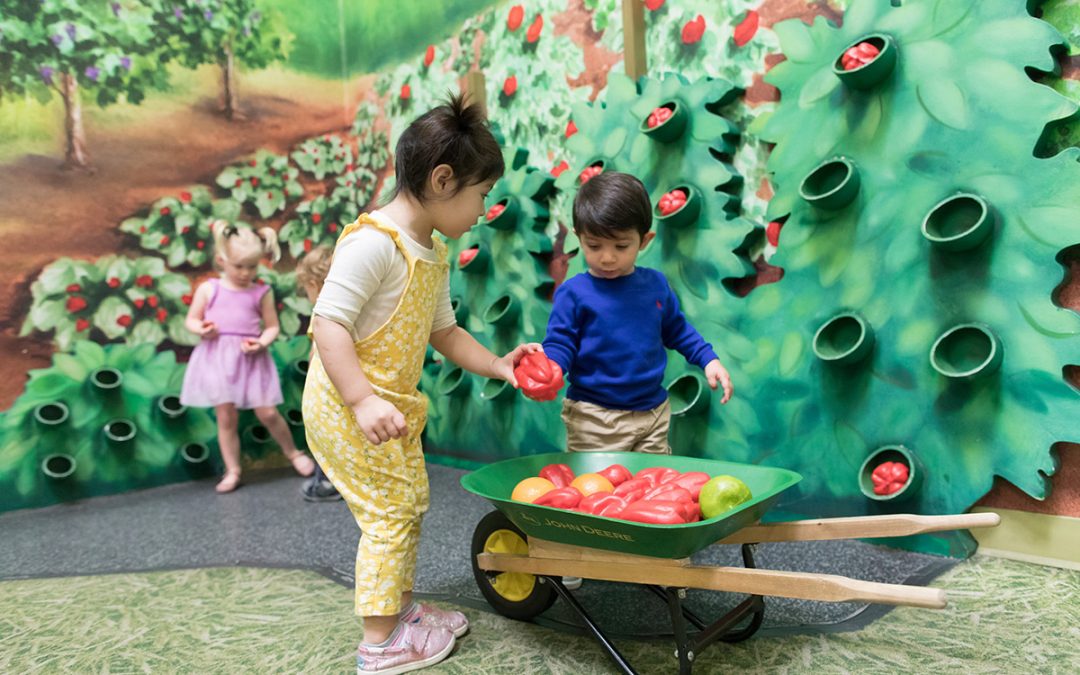“If we are to reach real peace in the world, we shall have to begin with the children.” Gandhi
Peace Education is the process of when children build values, an understanding of others’ perspectives, and exhibiting harmonious behaviors with themselves, others and their environment. It’s natural to face conflict in ever
y
day life. As conflict arises, children can become peacemakers by establishing a role in independence and working well with others. By providing a safe, peaceful environment for children both at home and at school, children will grow up to be effective communicators, show empathy towards others’ experiences, and build consensus in their own world.
Benefits of Peace Education
Expanding Communication Skills
Promoting your child’s use of peaceable and intentional language, learning to be conscious of how words can contribute (or not) to building positive relation ships, and to resolving disagreements in peaceful ways all make up this element. Older children additionally explore the history behind certain words and why they are hurtful. Communication skills also reinforce building conflict-solving and advocacy skills for challenging bias and injus tice.
Learning Collaboration Skills
Practice being mindful of other peoples’ perspectives, experiences, and life situations. The focus is on learning to be aware of how others may be different from oneself, and to understand needs in the context of people’s lives. Collaboration requires allowing space and giving respect to everyone’s voice when deciding on team or group action.
Build Community
Practicing integrating one’s own needs with others’ needs in a community that includes multiple diverse perspec tives, voices, and ages is central to this element. It also includes understanding that actions of bias and bullying break the bonds and ties of a peaceable community and helps children learn to be self-aware of behaviors that may hurt other children’s feelings.
Practice Peaceful Conflict-Management
Underlying this element is the aware ness that bias and bullying undermine a peaceable, just community. It includes strengthening one’s own sense of self, embracing differences, and building communication, critical thinking, and collaboration skills. One activity that support conflict management for all ages is The Talking Stick . As a conflict arises, a Talking Stick can provide a space which allows all those involved to take turns speaking and sharing their feelings. Children primarily learn to undertake peaceable conflict-solving in the context of real-life issues that arise among them.
Develop and Practice Advocacy Skills
Develop the desire and confidence, as well as the skills, for speaking out and acting for fairness for both oneself and others. Children gain practice in advocacy as incidents occur in their life . This knowledge strengthens children’s iden tity and their respect for diversity and offers older children insights into the issues of current life related to preju dice, discrimination, and peace. It also serves as inspiration and hope for creating a more just community, country , and world.
Integrate Peace Education at Home
Make Room for Peace at Home
Outer Peace Begins with Inner Peace . Children and grown-ups need special places that give them a sense of privacy and peace. Create a quiet refuge or just a corner, decorated simply and lovingly, where any family member can go for quiet reflection or prayer, or to work through turbulent feelings. Put art and writing materials out to help express feelings.
Find Peace in Nature
Go Outside ! Take children for a walk or let them explore nature in their own way. They beauty of nature is a great way for children to connect oneself to life. Children are often seeking ways to connect to secret outdoor space, even if it’s a corner of their backyard. Respect your child’s need for private exploration and inner reflection that nature inspires.
Make Time for Creative Play
Young children need time for unstructured, creative play. Dramatic social play reduces aggression and increases empathy in children. As children use play to work through feelings of fear and sadness, to find comfort, they are exploring and growing with their world around them, meanwhile, developing relationships with peers, family and those in their immediate circle.
Choose children’s toys carefully. Avoid toys that encourage or glorify violence. Teachers Resisting Unhealthy Children’s Entertainment ( www.truceteachers.org ) prepares an annual guide to help parents make wise choices about toys.
Engage Children’s Hearts and Hands
Children need a direct experience of giving. They love to make things – such as drawings or building structures- for family, friends or those in need. Create an environment of Kindness & Giving by setting the example and surrounding your children by those who also give. If your family has an excess of clothing or food, donate it to your local food bank or non-profit that supports families in need.
Support Peace Education at School
Urge your local school to establish or strengthen Peace Education and conflict resolution programs. Find ally organizations that can support professional learning for teachers, parents and the community. Educators for Peaceful Classrooms and Communities ( www.educatorsforpeacefulclassroomsandcommunities.org ) offers training and support for every grown up involved in the lives of children to promote a more peaceful environment. Find ways to create peace corners in classrooms and playgrounds for children to be able to mediate conflict and resolve disputes nonviolently.
References
Page, A., & Derman-Sparks, L. (2017, May). Connecting Our Values: Children’s Rights, Anti-Bias Education, and Peace Education. Exchange Magazine
, 36-39.









